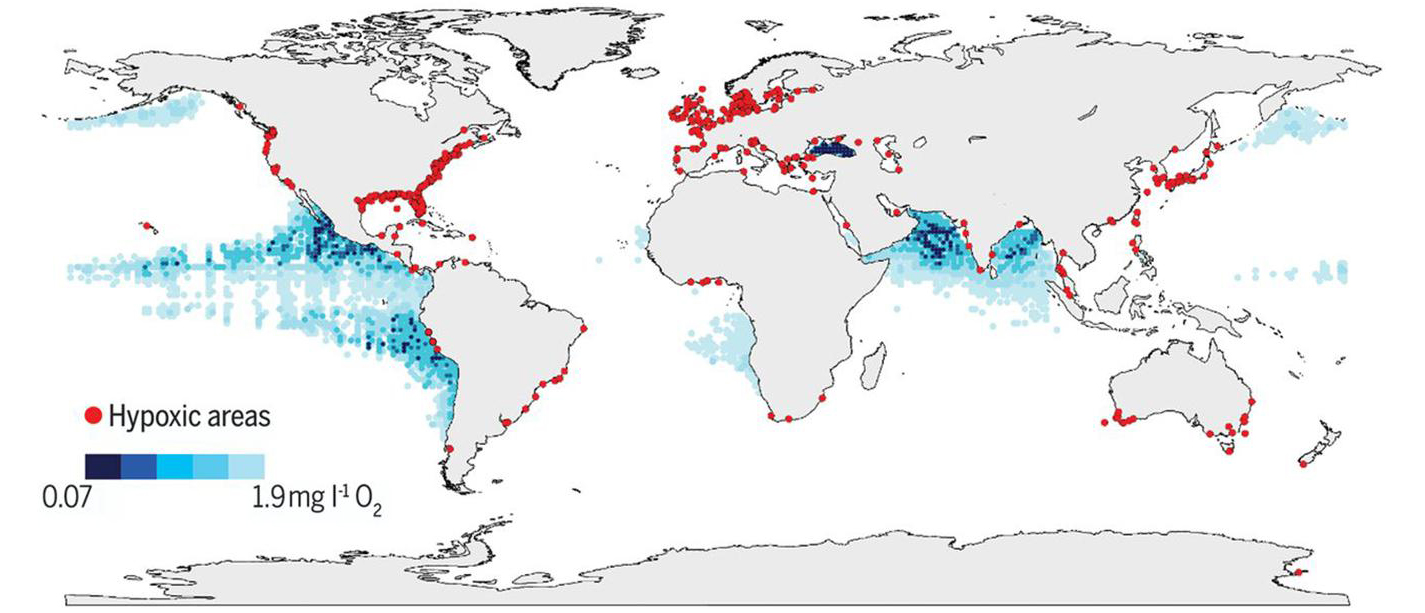Excerpt:
In the summer of 1985, Nancy Rabalais set sail on a research vessel into the Gulf of Mexico — and into the scientific unknown.
Back then, scientists knew little about wide expanses of low-oxygen water, called hypoxia, that sometimes appeared in the Gulf and other bays and rivers. That summer, Rabalais’ team was set on discovering how these areas connected to creatures that dwell on the bottom of the Gulf.
While analyzing water and sediment samples miles off the coast, the team from the Louisiana Universities Marine Consortium and Louisiana State University quickly discovered that hypoxia stretched from the Mississippi River to Texas — and that it lasted for most of the summer.
Later, they pinpointed the cause: increased amounts of nitrogen and phosphorus in the Gulf, largely due to runoff from farm fertilizer and other sources in the Mississippi River Basin.
Rabalais’ research put the Gulf of Mexico “dead zone” on the scientific map and into the nation’s psyche, leading to the creation of the U.S. Environmental Protection Agency’s Mississippi River/Gulf of Mexico Hypoxia Task Force and a host of efforts to combat nutrient pollution, which EPA calls “one of America’s most widespread, costly and challenging environmental problems.”
Over nearly four decades, Rabalais has become a giant in her field. She has completed hundreds of interviews with journalists, presented a TED Talk, testified to Congress multiple times, mentored countless students at LSU and published nearly 160 studies.
Now 73, Rabalais said she doesn’t plan to go on the research cruises anymore due to her age and health issues. She remains engaged in her work, even as she trains a new generation of scientists to take over.
“I believe in doing research that can support the public good,” she said. “And this is one of those ways…”
TED Talk (10-18-2021): The “dead zone” of the Gulf of Mexico | Nancy Rabalais
Ocean expert Nancy Rabalais tracks the ominously named “dead zone” in the Gulf of Mexico — where there isn’t enough oxygen in the water to support life. The Gulf has the second largest dead zone in the world; on top of killing fish and crustaceans, it’s also killing fisheries in these waters. Rabalais tells us about what’s causing it — and how we can reverse its harmful effects and restore one of America’s natural treasures.
NOAA National Ocean Service (05-10-2018): Happening Now: Dead Zone in the Gulf 2021
Low dissolved oxygen in the water is often referred to as a “dead zone” because most marine life either dies, or, if they are mobile such as fish, leave the area. Habitats that would normally be teeming with life become biological deserts. The second largest dead zone in the world is located in the U.S., in the northern Gulf of Mexico. The 2021 Gulf of Mexico Hypoxic Zone, or Dead Zone, an area of low oxygen that can kill fish and marine life near the bottom of the sea, measures 6,334 square miles. This year’s dead zone is larger than the average measured over the past five years.









